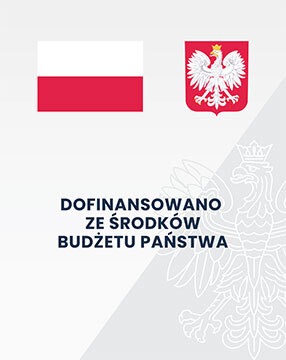Altmetria jako przedmiot zainteresowania bibliologii i informatologii
Małgorzata Kowalska
Afiliacja: Instytut Informacji Naukowej i Bibliologii, Uniwersytet Mikołaja Kopernika w Toruniu , Polska
Abstrakt
Teza/cel artykułu – Niniejszy artykuł omawia istotę wskaźników altmetrycznych w ocenie dorobku naukowego oraz podejmuje próbę udzielenia odpowiedzi na pytanie, w jakim stopniu problematyka nowych rodzajów metryk stanowi przedmiot zainteresowania badaczy z zakresu bibliologii i informatologii. Metody badań – Autorka przeprowadza analizę zawartości czasopism z zakresu biblio- i informatologii, w wyniku której wyłania najczęściej podejmowane obszary tematyczne odnoszące się do zagadnienia altmetrii. Wyniki i wnioski – Przeprowadzone badania dowodzą dużej popularności problematyki metryk alternatywnych w piśmiennictwie z zakresu biblio- i informatologii, zwłaszcza w ostatnich trzech latach. Autorka stoi na stanowisku, że zainteresowanie tematyką altmetrii będzie nadal rosło, a same altmetryki odegrają w przyszłości istotną rolę w ocenie publikacji naukowych.
Słowa kluczowe
Altmetria; Bibliologia i informatologia; Metryki alternatywne; Ocena dorobku naukowego
Bibliografia
„altmetrics” (2017). [online]. Google Trends [dostęp: 31.03.2017]. Dostępny w WWW: <https://trends.google.pl/trends/explore?date=all&q=altmetrics>.
Adam, Michaele (2014). Bibliometrics 2.0 – Altmetrics in medicine. GMS Medizin – Bibliothek– Information, vol. 14, iss. 3, pp. 1-8.
Adie, Euan (2014). Taking the alternative mainstream. El Profesional de la Informacion, vol. 23, iss. 4, pp. 349-351.
Akbulut, Müge (2015). Relationship between traditional metrics and altmetrics: a case analysis of PLoS, Information World, vol. 16, iss. 2, pp. 275-285.
Altmetrics for Researchers (2015), [online]. Duke University. Medical Center Library & Archives [dostęp: 31.03.2017]. Dostępny w WWW: <http://guides.mclibrary.duke.edu/altmetrics/home>.
Álvarez-Bornstein, Belén; Montesi, Michaela (2016). Researchers’ communication on Twitter. A virtual ethnography in the area of information science. Revista Espanola de Documentacion Cientifica, vol. 39, iss. 4, pp. 1-15.
Barnes, Cameron (2015). The use of altmetrics as a tool for measuring research impact. Australian Academic & Research Libraries, vol. 46, iss. 2, pp. 121-134.
Barros, Moreno (2015). Altmetrics: Alternative metrics of scientific impact based on social media. Perspectivas em Ciencia da Informacao, vol. 20. iss. 2, pp. 19-37.
Bornmann, Lutz (2014). Do altmetrics point to the broader impact of research? An overview of benefits and disadvantages of altmetrics. Journal of Informetrics, vol. 8, iss. 4, pp. 895-903.
Bornmann, Lutz; Haunschild, Robin (2016a). How to normalize Twitter counts? A first attempt based on journals in the Twitter Index, Scientometrics, vol. 107, iss. 3, pp. 1405-1422.
Bornmann, Lutz; Haunschild, Robin (2016a). Normalization of Mendeley reader impact on the reader- and paper-side: A comparison of the mean discipline normalized reader score (MDNRS) with the mean normalized reader score (MNRS) and bare reader counts. Journal of Informetrics, vol. 10, iss. 3, pp. 776-788.
Bornmann, Lutz; Haunschild, Robin (2016c). t factor: A metric for measuring impact on Twitter. Malaysian Journal of Library & Information Science, vol. 21, iss. 2, pp. 13-20.
Cassella, Maria (2015). La valutazione della monografia accademica di ricerca. Biblioteche Oggi, vol. 33, pp. 12-21.
Chen, Kuang-hua et al. (2015). Exploring alternative metrics of scholarly performance in the social sciences and humanities in Taiwan. Scientometrics, vol. 102, iss. 1, pp. 97-112.
De Winter, Joost (2015). The relationship between tweets, citations, and article views for PLOS ONE articles. Scientometrics, vol. 102, iss. 2, pp. 1773-1779.
Dhiman, Anil Kumar (2015). Bibliometrics to Altmetrics: Changing trends in assessing research impact. DESIDOC Journal of Library & Information Technology, vol. 35, iss. 4, pp. 310-315.
Dos Santos Ribeiro, Danielly; Camargo, Luiza Moreira (2016). Implementation of alternative metrics in Portal oasisbr. Cadernos de Biblioteconomia, Arquivistica e Documentacao, iss. 2, pp. 168-178.
Ebrahimy, Saeideh; Setareh, Fatemeh (2016). Research on alternative measures in the F1000 system with Google Scholar citation index. Journal of Information Processing & Management, vol. 31, iss. 4, pp. 891-909.
Eysenbach, Gunther (2011). Can tweets predict citations? Metrics of social impact based on twitter and correlation with traditional metrics of scientific impact. Journal of Medical Internet Research [online], vol. 13, iss. 4 [dostęp: 31.02.2017]. Dostępny w WWW: <https://www.ncbi.nlm.nih.gov/pmc/articles/PMC3278109/>.
Fenner, Martin; Linn, Jeniffer (2015). ALM – nowatorskie metryki wskaźników wpływu w publikacjach naukowych. Biblioteka, nr 19, s. 235-246.
Figshare to display Altmetric badges (2016). Research Information, iss. 84, p. 34.
Free, David (2016). Altmetric data now available in Summon. College & Research Libraries News, vol. 77, iss. 4, p. 173.
Galligan, Finbar; Dyas-Correia, Sharon (2013). Altmetrics: rethinking the way we measure. Serials Review, Vol, 39, iss. 1, pp. 56-61.
González-Valiente, Carlo Luis; Pacheco-Mendoza, Josmel; Arencibia-Jorge, Ricardo (2016). A review of altmetrics as an emerging discipline for research evaluation. Learned Publishing, vol. 29, iss. 4, pp. 229-238.
Gumpenberger, Christian; Glänzel, Wolfgang; Gorraiz, Juan (2016). The ecstasy and the agony of the altmetric score. Scientometrics, vol. 108, iss. 2, pp. 977-982.
Haustein, Stefanie et al. (2014). Astrophysicists on Twitter. An in-depth analysis of tweeting and scientific publication behavior. ASLIB Journal of Information Management, vol. 66, iss. 3, pp. 279-296.
Hoffmann, Christian Pieter; Lutz, Christoph; Meckel, Miriam (2016). A relational altmetric? Network centrality on ResearchGate as an indicator of scientific impact. Journal of Association for Information Science & Technology, vol. 67, iss. 4, pp. 765-775.
Jaskowska, Małgorzata (2016).Wpływ wskaźników altmetrycznych na doskonalenie systemu oceny wartości prac naukowych w humanistyce. W: Sosińska-Kalata, Barbara; Przastek-Samokowa, Maria; Wiorogórska, Zuza red. Nauka o informacji w okresie zmian: informatologia i humanistyka cyfrowa. Warszawa: Wydaw. SBP, s. 179-193.
Konkiel, Stacy (2013). Altmetrics: A 21st-century solution to determining research quality. Information Today, [online], vol. 37, iss. 4 [dostęp: 31.03.207]. Dostępny w WWW: <http://www.infotoday.com/OnlineSearcher/Articles/Features/Altmetrics-A-stCentury-Solution-to-Determining-Research-Quality-90551.shtml>.
Konkiel, Stacy; Scherer, Dave (2013). New opportunities for repositories in the age of altmetrics. Bulletin of the Association for Information Science & Technology, vol. 39, iss. 4, pp. 22-26.
Kwiek, Marek (2015). Uniwersytet w dobie przemian. Instytucje i kadra akademicka w warunkach rosnącej konkurencji. Warszawa: PWN.
Linn, Jeniffer (2012). The measure of usage, the usage of measures: article level metrics at PLoS. Against the Grain, vol. 24, iss. 4, pp. 42-46.
Maflahi, Nabeil; Thelwall, Mike (2016). When are readership counts as useful as citation counts? Scopus versus Mendeley for LIS Journals. Journal of the Association for Information Science & Technology, vol. 67, iss. 1, pp. 191-1999.
Malone, Tara; Burke, Susan (2016). Academic librarians’ knowledge of bibliometrics and altmetrics. Evidence Based Library & Information Practice, vol. 11, iss. 3, pp. 34-49.
Megwalu, Anamika (2015). ResearchGate: an academic social networking site. Charleston Advisor, vol. 17, iss. 1, pp. 47-51.
Mehraban, Sarah; Mansourian, Yazdan (2014). Tracking scientific trends: scientometrics methods and metrics, and the change in librarians’ roles. Journal of Information Processing and Management, vol. 29, iss. 3, pp. 1-20.
Melero, Remedios (2015). Altmetrics – a complement to conventional metrics. Biochemia Medica (Zagreb) [online], vol. 25, iss. 2 [dostęp: 31.03.2017]. Dostępny w WWW: <https://www.ncbi.nlm.nih.gov/pmc/articles/PMC4470104/>.
Ming-Yueh, Tsay; Ling-Li, Tseng (2014). An introductory review of altmetrics. Journal of Educational Media & Library Sciences, vol. 51, Special Iss, pp. 91-120.
Moed, Henk F.; Halevi, Gali (2015). Multidimensional assessment of scholarly research impact. Journal of the Association for Information Science & Technology, vol. 66, iss. 10, pp. 1988-2002.
Mohammadi, Ehsan et al. (2015). Who reads research articles? An altmetrics analysis of Mendeley user categories. Journal of the Association for Information Science & Technology, vol. 66, iss. 9, pp. 1832-1846.
NISO (2016). Outputs of the NISO Alternative Assessment Metrics Project.A Recommended Practice of the National Information Standards Organization, [online]. National Information Standards Organization [dostęp: 31.03.2017]. Dostępny w WWW: <http://www.niso.org/apps/group_public/download.php/17091/NISO RP-25-2016 Outputs of the NISOAlternative Assessment Project.pdf>.
O’Neill, Jill (2016). NISO recommended practice: Outputs of the Alternative Assessment Metrics Project. Collaborative Librarianship, vol. 8, iss. 3, pp. 118-123.
Onyancha, Omwoyo (2017). Altmetrics of South African journals: implications for scholarly impact of South African research. Publishing Research Quarterly, vol. 33, iss. 1, pp. 71-91.
Orduña-Malea, Enrique; Martin-Martin, Alberto; Lopez-Cozar, Emilio Delgado (2015). ResearchGate as a source for scientific evaluation: revealing its bibliometric application. El Profesional de la Informacion, vol. 25, iss. 2, pp. 303-310.
Ortega, José Luis (2015). Disciplinary differences in the use of academic social networking sites. Online Information Review, vol. 39, iss. 4, pp. 520-536.
Ortega, José Luis (2016). To be or not to be on Twitter, and its relationship with the tweeting and citation of research papers. Scientometrics, vol. 109, iss. 2, pp. 1353-1364.
Osiński, Zbigniew (2012). Bibliometria metodą analizy i oceny dorobku naukowego historyków najnowszych dziejów Polski. W: Dymmel, Anna; Rejakowa, Bożena red. Kultura, historia, książka: zbiór studiów. Lublin: UMCS, s. 605-616.
Priem, Jason et al. (2010). Altmetrics: A manifesto, [online]. Altmetrics.org [dostęp: 31.03.2017]. Dostępny w WWW: <http://altmetrics.org/manifesto/>.
Real-time citation tool (2016). CILIP Update, iss. 6, p. 18.
Robinson-Garcia, Nicolás et al. (2014) New data, new possibilities: exploring the insides of Altmetric.com. El Profesional de la Informacion, vol. 23, iss. 4, pp. 359-366.
Roemer, Robin Chin; Borchadt, Rachel (2012). From bibliometrics to altmetrics. College & Research Libraries News, vol. 73, iss. 10, pp. 596-600.
Roemer, Robin Chin; Borchadt, Rachel (2015). issues, controversies, and opportunities of altmetrics. Library Technology Reports, vol. 51, iss. 5, pp. 20-30.
Ross, Mounce (2013). Open Access and Altmetrics: Distinct but Complementary. Bulletin of Association for Information Science & Technology, Vo. 39, iss. 4, pp. 14-17.
Rothe, Robin; Schmitz Jasmin (2016). Die mögliche Vielfalt der Impact-Messung: Anbietervergleich von Aggregatoren von Altmetriken [online]. ZB MED-Blog [dostęp: 31.03.2017]. Dostępny w WWW: <http://zbmedblog.de/?p=383>.
Rychlik, Małgorzata(2013). Epoka cyfrowa i jej nowe wskaźniki altmetryczne. Biuletyn EBIB [online], nr 144 [dostęp: 31.03.2017]. Dostępny w WWW: <http://open.ebib.pl/ojs/index.php/ebib/article/view/121/271>.
Sheppard, Beth (2015). By the numbers: bibliometrics and altmetrics as measures of faculty impact in the field of religion. Theological Librarianship, vol. 8, iss. 2, pp. 28-36.
Shrivastva, Rishabh; Mahajan, Preeti (2016). Relationship between citation counts and Mendeley readerships metrics. New Library World, vol. 117, iss. 3/4, pp. 229-238.
Snijder, Ronald (2016). Revisiting an open access monograph experiment: measuring citations and tweets 5 years later. Scientometrics, vol. 109, iss. 3, pp. 1855-1875.
Thelwall, Mike; Fairclough Ruth (2015). Geometric journal impact factors correcting for individual highly cite articles. Journal of Informetrics, vol. 9, iss. 2, pp. 263-272.
Thelwall, Mike; Wilson, Paul (2016). Mendeley readership altmetrics for medical articles: an analysis of 45 fields. Journal of Association for Information Science & Technology, vol. 67, iss. 8, pp. 1962-1972.
Vélez-Cuartas, Gabriel; Lucio-Arias, Diana; Leydesdorff Loet (2016). Regional and global science: publications from Latin America and the Caribbean in the SCIelo Citation Index and the Web of Science. El Profesional de la Informacion, vol. 25, iss. 1, pp. 35-46.
Wiley adds altmetric data to journal program (2014). Advanced Technology Libraries, vol. 43, iss. 8, pp. 4-5.
Afiliacja: Instytut Informacji Naukowej i Bibliologii, Uniwersytet Mikołaja Kopernika w Toruniu , Polska
Biogram:
Absolwentka bibliotekoznawstwa i informacji naukowo-technicznej oraz filologii germańskiej na Uniwersytecie Mikołaja Kopernika w Toruniu, adiunkt w Zakładzie Informacji Naukowej Instytutu Informacji Naukowej i Bibliologii UMK. Jej zainteresowania naukowe koncentrują się wokół informatologii jako dyscypliny naukowej, infobrokerstwa, zasobów cyfrowych, wykorzystania crowdsourcingu w działalności instytucji sektora kultury. Autorka dwóch monografii (Crowdsourcing internetowy – pozytywny wymiar partycypacji społecznej . Konteksty – istota – uwarunkowania. Warszawa: Wydaw. SBP, 2015; Dygitalizacja zbiorów bibliotek polskich. Warszawa: Wydaw. SBP, 2007), współredaktor czterech wydawnictw zbiorowych, redaktor naukowy periodyku „Toruńskie Studia Bibliologiczne” oraz ponad 80 artykułów naukowych. Autorka kursów e-learningowych dla bibliotekarzy „BIBWEB”, „Login: Biblioteka”, „Infobrokering”. Członek Międzynarodowego Towarzystwa Zarządzania Wiedzą ‒ ISKO, Interdyscyplinarnego Zespołu Ministra Nauki i Szkolnictwa Wyższego ds. Upowszechniania Nauki oraz Sekretarz Komisji Bibliografii i Bibliotekoznawstwa Towarzystwa Naukowego w Toruniu.
Autor składa oświadczenie o oryginalności przesłanego tekstu, a w umowie wydawniczej przenosi na rzecz Wydawcy nieodpłatnie majątkowe prawa autorskie w zakresie jednorazowego opublikowania dzieła.
CC BY-NC-ND 4.0 Uznanie autorstwa - Użycie niekomercyjne - Bez utworów zależnych 4.0 Międzynarodowe




